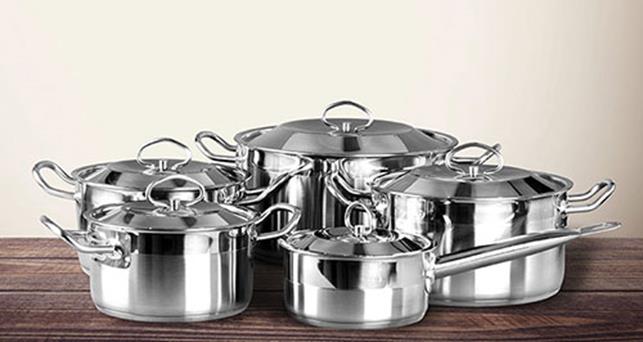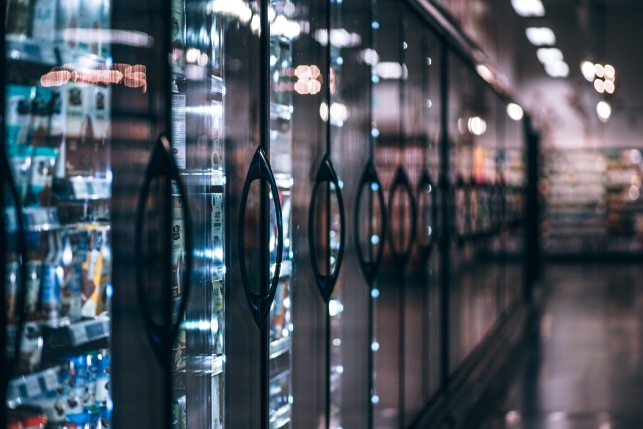When it comes to cooking good meals, having quality cookware is a must-have. However, given the variety of cookware materials available in the market, such as stainless steel, non-stick, enameled cast iron, carbon steel and aluminium, purchasing the right type of cookware can be extremely difficult.
Here are some of the most common cookware materials:
Stainless steel: Well known for its high resistance to rust, scratches, stain and relatively stable under high temperature. Being a durable material, it requires minimal maintenance compared to other type of cookware and is easily cleaned. Problems such as peeling or discoloration will not happen. However, it is a poor heat conductor but buying better quality stainless steel cookware with added copper or aluminium will allow better heat conduction. It is expensive compared to uncoated stainless steel cookware, but worth every penny.
Non-stick: Non-stick pans could be made from metal like stainless steel, copper or aluminium. The cooking surface is enhanced with non-stick coating that keeps food from sticking. Therefore non-stick pans are easy to clean and wash. They also help distribute heat evenly to ensure food are cooked in a shorter period of time. It is also a perfect option for health conscious users as they are able to cook their dishes without using a drop of oil. Non-stick cookware has dark greyish coating and offers a better appearance compared to regular cookware that only comes in shiny silver colour.
However, non-stick pans need special attention When it comes to cleaning, avoid washing non stick pans with steel wool and abrasive cleaners which might damage the coating. Also, metal and sharp cooking utensils might scratch the cooking surface and damage the coating. Non-stick cookware also has to be replaced once the coating is damaged because it will lead to severe health issues. Always use nylon or plastic utensils to protect your non-stick cookware.
Enameled cast iron: It can be heated to high temperature which makes it an ideal cookware for frying, browning and stewing. It distributes heat evenly and retains heat very well, so is suitable for long and low simmering. Enameled cast iron also has non-stick surface to prevent the foods from sticking and therefore make cooking and cleaning easy. It is healthy and safe to use because it does not leach iron or other metals into the foods. As such, it can be used to cook all kind of dishes as well as acidic foods. Generally, they are available in a variety of vibrant colours and look great in any setting. To sum up, enameled cast iron is durable, versatile, beautiful and long lasting. But it is rather heavy as well and fragile so handle with care.
Uncoated cast iron: It is considered as one of the traditional cookware and is made from non-toxic material. Uncoated cast iron performs well at high temperatures and its heat retention helps to keep the food warm before serving. It works perfectly well on the stove, grill and even in the oven. If it is cared properly, this kind of cookware can last for a very long time. While it is cheap and affordable for every consumer, it will impart iron to food and excessive iron intake will lead to health problems. As cast iron is reactive, it will react with acidic foods and eventually affect the taste of foods. In fact, the chances for iron leaking into the foods can be reduced if the pan is well-seasoned. Hence, uncoated cast iron needs thorough drying and regular seasoning in order to protect against rust and corrosion.
Carbon steel & Blue steel: The most traditional type of material for cookware like wok and pan. Carbon steel normally comes in blue and black finish as an extra heat treatment forms a protective layer to enhance its performance. They are widely used in professional kitchens due to their durability and great performance in all style of cooking. They are stable under high temperatures and work well with metal utensils like forks, spoons or spatulas. Being excellent at conducting heat, they provide quick and even cooking. After being seasoned, they can last for years and tend to acquire natural non-stick features.
Copper: Among all metal cookware, copper is an excellent conductor of heat. It is a great option for cooking delicate sauces and foods as they are able to maintain a reliable cooking temperature. Apart from the conductivity, copper is aesthetically pleasing a perfect match with any kitchen interior. Due to its exceptional heat conduction and attractive look, copper cookware is rather expensive compared to other types of cookware. Some copper pots are also lined with materials such as stainless steel, nickel or tin to reduce the possible risk of copper toxicity. However, improper cleaning might damage the lining systems, so avoid abrasive washing liquid that may spoil your copper cookware.
Aluminium: A popular choice because aluminium is corrosion resistant and lightweight. Aluminium pans also offer fantastic thermal conductivity, so they tend to heat up faster and make everyday cooking easier. It is safe to use as it does not react with acidic foods and will not alter the flavour of dishes. One of the most prominent benefits is that aluminium is cheaper compared to other materials, thus making it a great option for purchase. Discoloration is the only downside of aluminium, as it will turn greyish in colour over time.
Selecting a proper cookware not only enhance the taste of dishes but also make cooking easier! Thus, always take your time to do research and survey when purchasing cookware as a good set of cookware may go a long way in the kitchen.



